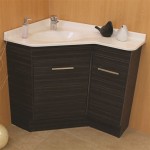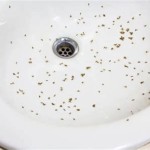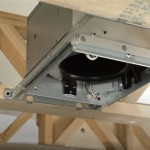Removing a Bathroom Sink Stopper Permanently: A Comprehensive Guide
Bathroom sink stoppers, while intended to provide convenience by allowing the basin to hold water, can often become problematic. They are prone to trapping hair, soap scum, and other debris, leading to clogs and slow drainage. In some instances, homeowners may opt to permanently remove the stopper entirely, either to eliminate these issues or due to persistent mechanical failures within the stopper mechanism. This article provides a comprehensive guide to permanently removing a bathroom sink stopper, covering various stopper types and offering detailed instructions for each.
Before proceeding with any removal process, it’s crucial to identify the type of stopper mechanism installed in the sink. The most common types include pop-up stoppers, lift-and-turn stoppers, push-button stoppers, and toe-touch stoppers. Each type has a slightly different removal process, and attempting to force a stopper open or dislodge it without understanding its mechanism can result in damage to the sink or plumbing.
Safety is paramount throughout the removal process. Before beginning any work on the plumbing, the water supply to the sink should be shut off. This typically involves closing the shut-off valves located beneath the sink. If these valves are absent or malfunctioning, the main water supply to the house may need to be turned off. Additionally, having appropriate tools readily available will streamline the process and minimize the risk of injury or damage. These tools often include a basin wrench, adjustable pliers, a screwdriver (both flathead and Phillips head), and potentially a small wrench set.
Identifying and Addressing Potential Issues Before Removal
Prior to initiating the permanent removal process, a thorough inspection of the drain assembly and surrounding plumbing is recommended. Look for signs of corrosion, leaks, or damage. Addressing these issues before removing the stopper can prevent complications later on. For example, if the drainpipe is corroded, attempting to loosen connections could cause it to crumble, necessitating more extensive repairs. Similarly, existing leaks should be addressed to prevent water damage after the stopper is removed.
Another important consideration is the presence of any rust or mineral buildup. Over time, these deposits can solidify and make it difficult to loosen the stopper or its connecting hardware. Applying a penetrating oil, such as WD-40 or Liquid Wrench, to the affected areas several hours or even a day before attempting removal can help to loosen the corrosion and make the process easier. It's important to use these products sparingly and to clean up any excess to prevent staining or damage to the sink or surrounding surfaces.
Furthermore, consider the reason for wanting to permanently remove the stopper. If the stopper is simply malfunctioning due to a buildup of debris, thoroughly cleaning the stopper and drain assembly may resolve the issue and eliminate the need for permanent removal. Sometimes, a simple cleaning with a mixture of baking soda and vinegar, followed by flushing with hot water, can dislodge the debris and restore proper function. If the stopper is damaged beyond repair, consider replacing it with a new one rather than permanently removing it, as this will maintain the sink's functionality for holding water when needed.
Detailed Removal Procedures for Common Stopper Types
The procedure for removing a bathroom sink stopper varies depending on its type. Below are detailed instructions for the most common types:
Pop-Up Stoppers: These are arguably the most common type of bathroom sink stopper. They are typically controlled by a lever or knob located behind the faucet. To remove a pop-up stopper, begin by locating the clevis strap (a metal strip with holes) and pivot rod underneath the sink. The pivot rod connects the clevis strap to the stopper. First, detach the pivot rod from the clevis strap. This may involve loosening a small screw or unsnapping a clip. Once the pivot rod is detached, the stopper can usually be lifted straight out of the drain. In some cases, the stopper may be slightly stuck due to debris. Gently wiggling it back and forth while pulling upwards can help to dislodge it. If the stopper is particularly stubborn, a pair of pliers may be used to gently grip the stopper and provide more leverage. However, care should be taken not to damage the stopper or the sink.
After removing the stopper, inspect the drain flange (the metal ring that sits flush with the sink basin) for any signs of damage or corrosion. If the flange is damaged, it may need to be replaced. Clean the flange and the surrounding area thoroughly to remove any remaining debris. If permanently removing the stopper, consider installing a mesh drain screen to prevent large objects from falling into the drainpipe. A drain screen will catch hair and other particles, preventing clogs and maintaining proper drainage.
Lift-and-Turn Stoppers: Lift-and-turn stoppers typically have a knob on top that needs to be lifted and turned to engage or disengage the stopper. To remove this type of stopper, locate the screw that secures the knob to the stopper body. This screw may be visible on the top of the knob or concealed beneath a decorative cap. Use a small screwdriver to remove the screw. Once the screw is removed, the knob can be lifted off, exposing the stopper mechanism. The stopper itself may be threaded or simply held in place by friction. If it's threaded, turn it counterclockwise to unscrew it from the drain. If it's held in place by friction, gently pull it upwards while wiggling it back and forth. Again, avoid using excessive force, as this could damage the drain assembly.
After removing the lift-and-turn stopper, inspect the drain opening for any remaining pieces of the stopper mechanism. Remove any debris or obstructions. As with pop-up stoppers, consider installing a mesh drain screen to prevent future clogs. Also, examine the drain flange for any signs of damage or corrosion and address any issues as needed.
Push-Button Stoppers: Push-button stoppers operate by pushing down on the stopper to engage it and pushing again to release it. To remove this type of stopper, you typically need to access the mechanism from underneath the sink. Like pop-up stoppers, they often have a clevis strap and pivot rod assembly. Locate the point where the pivot rod connects to the stopper mechanism. Disconnect the pivot rod by loosening any screws or clips that secure it. Once the pivot rod is disconnected, the stopper can often be removed by pushing down on it and then gently wiggling it upwards. Some push-button stoppers may have a locking mechanism that needs to be disengaged before the stopper can be removed. Consult the manufacturer's instructions for specific details on disengaging the locking mechanism.
After removing the push-button stopper, clean the drain opening and inspect the flange for any signs of damage. Consider installing a drain screen to prevent clogs. Additionally, if the push-button mechanism is complex, take a picture of the assembly before disassembly. This can be helpful if you ever decide to reinstall the stopper or replace it with a new one.
Toe-Touch Stoppers: Toe-touch stoppers are similar to push-button stoppers but are typically operated by pressing on the stopper with your toe. The removal process is generally similar to that of push-button stoppers. You will need to access the mechanism from underneath the sink and disconnect the pivot rod from the stopper. Once the pivot rod is disconnected, the stopper can usually be removed by pushing down on it and then gently wiggling it upwards. Some toe-touch stoppers may have a more complex locking mechanism, so consult the manufacturer's instructions if you encounter any difficulties.
Following the removal of the toe-touch stopper, clean the drain opening and inspect the flange for any damage. Install a drain screen to prevent future clogs. As with push-button stoppers, taking a picture of the assembly before disassembly can be helpful for future reference.
Addressing the Aftermath of Permanent Removal
Once the stopper is permanently removed, the sink will no longer be able to hold water. This is a significant functional change that should be carefully considered before proceeding. If there is a possibility that you will need to hold water in the sink in the future, consider replacing the stopper with a new one instead of permanently removing it. However, if you are certain that you will not need this function, there are several steps you can take to ensure proper drainage and prevent future problems.
The most important step is to install a high-quality drain screen. A drain screen will prevent hair, soap scum, and other debris from entering the drainpipe, which can lead to clogs. Choose a drain screen that fits snugly into the drain opening and is made of a durable material, such as stainless steel. Clean the drain screen regularly to prevent buildup and maintain proper drainage. A clogged drain screen is just as problematic as a clogged stopper.
Another important consideration is the aesthetics of the sink. With the stopper removed, the open drain may be visible and detract from the overall appearance of the bathroom. Consider installing a decorative drain cover to conceal the drain opening. Choose a drain cover that complements the style of your sink and bathroom decor. There are many different styles and finishes available, so you should be able to find one that suits your needs.
Finally, regularly flush the drain with hot water to prevent buildup and maintain proper drainage. You can also use a mixture of baking soda and vinegar to clean the drain and remove any minor clogs. Pour a cup of baking soda down the drain, followed by a cup of vinegar. Let the mixture sit for about 30 minutes, and then flush with hot water. This will help to dissolve any grease or debris that may be accumulating in the drainpipe.
Long-Term Maintenance and Considerations
After permanently removing the bathroom sink stopper, ongoing maintenance is crucial to prevent future plumbing issues. Regular cleaning of the drain with enzymatic drain cleaners is recommended to break down organic matter and prevent clogs. These cleaners are generally safer for pipes than harsh chemical drain cleaners, which can corrode plumbing over time. Follow the manufacturer's instructions carefully when using these products.
Periodically inspect the drain assembly for any signs of leaks or corrosion. If leaks are detected, address them promptly to prevent water damage. This may involve tightening connections, replacing worn-out seals, or repairing damaged pipes. Ignoring leaks can lead to more extensive and costly repairs in the future.
Consider the implications of permanently removing the stopper if planning to sell the property. Some potential buyers may view the absence of a stopper as a negative feature. Replacing the stopper with a new, functional unit before listing the property may increase its appeal to a wider range of buyers. This is particularly relevant if bathtubs also lack functional drain stoppers.
When Permanently Removing A Mechanical Bathroom Sink Stopper How Do You Prevent Water Leakage From The Hole Where Horizontal Pivot Rod Was Should Whole Tailpiece Be Replaced To Avoid This
When Permanently Removing A Mechanical Bathroom Sink Stopper How Do You Prevent Water Leakage From The Hole Where Horizontal Pivot Rod Was Should Whole Tailpiece Be Replaced To Avoid This
Is There A Bathroom Sink Stopper That Doesn T Require Lever Assembly And Can Be Left In The Hole Without It Stopping Straining Quora

Permanently Fixing A Bathroom Drain Shorts Tips Short

How To Remove A Sink Stopper The Home Depot

How To Unclog A Bathroom Sink Drain

How To Remove A Bathroom Sink Pop Up Stopper

9 Easy Steps To Remove A Bathroom Sink Stopper With Pictures

How To Remove A Sink Stopper The Home Depot
When Permanently Removing A Mechanical Bathroom Sink Stopper How Do You Prevent Water Leakage From The Hole Where Horizontal Pivot Rod Was Should Whole Tailpiece Be Replaced To Avoid This
Related Posts







